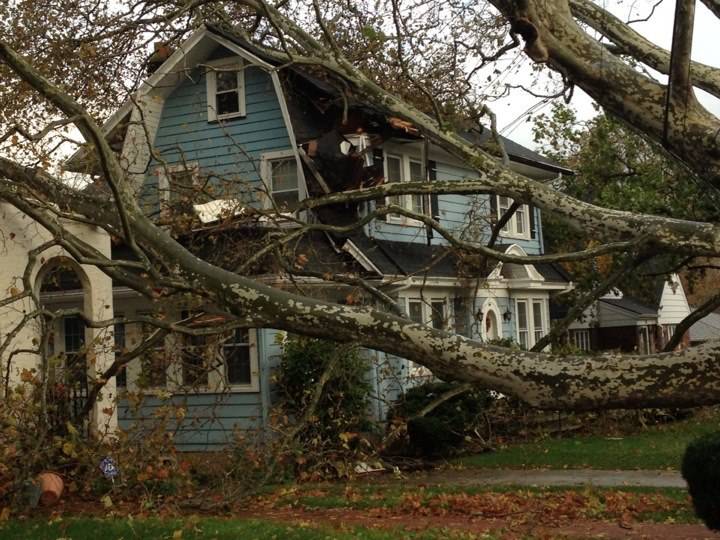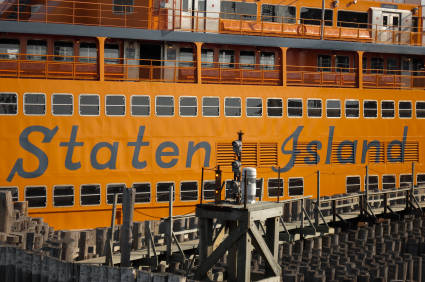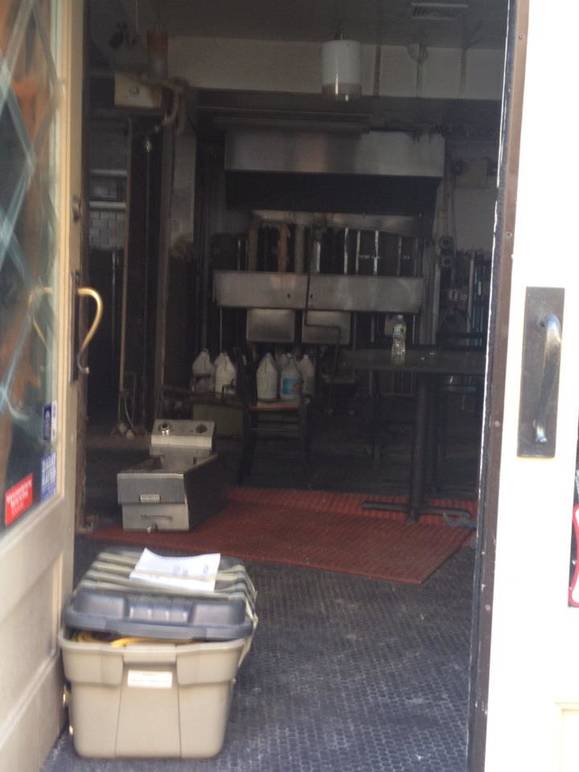Staten Island's Swept Away Family Memorabilia
By now, the images of a post-Sandy Staten Island are familiar: the ruined houses, the flooded streets, the belongings and appliances out on the streets, the cars and boats tossed around like toys, seemingly at random.
Two weeks later, New York City’s smallest borough, like other coastal places, is still struggling to dig out. The people, many with Italian surnames, begging the city and relief agencies to come to their aid.
I live in Staten Island, and my family on my mother’s side—Sicilian-Americans from Castellammare del Golfo—go back nearly 80 years on the island, to the years of the Great Depression. And this disaster makes me think of a culture and a society that could very well have been wiped out by this terrible storm.
My mother remembers being taken to the beaches of Staten Island as a small child. They lived on the Lower East Side back then (Brooklyn later), and it was a long, boring trip for a little girl. My grandmother would rent rooms or a bungalow, to give her five children a break from the sweltering tenement heat.
Later, my grandmother, a seamstress married to a dockworker, managed to scrape together enough money to buy a patch of land and a small bungalow near New Dorp Beach. I don’t know exactly how she managed to do it, but I do remember the last years of the bungalow, down the street from Miller Field, then an army airfield, with a former Vanderbilt mansion as the headquarters.
I remember the photos, now scattered in my cousins’ homes. My grandfather’s big garden, and the shed where he made wine (yes, I know, a cliché). Friends and family would travel to my grandparents’ place to stay the weekend, or a week. My mother’s godparents played guitars and mandolins, and she said they’d sit under a tree and play Sicilian songs for whoever was around. When money was tight, my grandmother (we called her “grandma”—we reserved nonna for my paternal grandmother, who lived in Palermo) would send my mother and her sisters to the beach to gather mussels. Some tomatoes and oil, a lot of pasta, and she had enough to feed a crowd.
During World War II, the military housed Italian prisoners of war at Miller Field. Grandma, generous to a fault, would take some in for Sunday dinner. They had a separate building for big communal meals; we called it the screenhouse years later.
I spent my first couple of summers there. I was a Brooklyn kid back then, and my mother and her sisters took the kids out to the beach house, while our fathers worked in the city. They’d come on weekends. I have some vague memories: My grandmother spreading tomato purée on wooden boards in the sun, smuggling leftovers to the cats that roamed the yard. We had a little pool and a swing set. Later, my father taught me to swim a few blocks away in Raritan Bay—the very bay whose storm surge caused so much damage and pain.
That property has a place in what will be Sandy’s lore. As part of the exodus from Brooklyn to Staten Island, my grandparents and uncles built a house there, to replace the bungalow. It’s a fine, strong brick house, a duplex, so typical of Staten Island. My grandfather, and later my uncles, continued some traditions. The garden lived on, and so did the winemaking, until they, too, passed away.
My 80-something aunt and two cousins still live in the house, with their families. When Sandy approached, my aunt refused to leave her home. Her belongings were stashed in the basement, a space that’s barely below ground, when my cousin moved back in with her mother. The storm surge came and flooded that basement nearly up to the ceiling, and a couple of the family cars were swept away. My cousins and aunt all survived. Miraculously, one half of the house maintained power, a godsend to my espresso-addicted cousin, who says she doesn’t know what she’d do without her machine.
I’m guessing that a lot of family memorabilia was swept away, too. My aunt kept everything. Everything. I don’t have the heart to ask her, and she may not even know. Her memory fades in and out now, and it would be cruel to press the point.
When I see the pictures from Staten Island’s coastal areas, I can see that a lot of memories were swept away, memories of an immigrant culture, of people who knew how to enjoy the time they had with their friends and family from the old country. They didn’t have pretensions then.
And they later built what they thought was a permanent life there, when Staten Island’s time of being a seashore resort had passed, a victim of pollution and more sophisticated, but not necessarily better, appetites and aspirations. But their ancestors back in Italy knew that nature could be cruel. It’s a lesson we’ll have to relearn as we decide how to rebuild.
Postcript: Lest anyone think that modern, hipster Italian immigrants escaped Sandy’s fury, today I ran into Stefano Barbagallo, one of the co-owners of Barbarini Mercato, one of my favorite places for lunch near my Financial District office.
Barbarini was devastated—the surge flooded Front Street, just north of the South Street Seaport. Stefano looked remarkably stoic for someone whose business was ruined in the matter of a couple of hours. Will he rebuild? He said he didn’t know, just couldn’t say. It depended on whether the various levels of government will pitch in to help.
A real pity—Barbarini was a rare jewel, relaxed and authentic. The food was truly Italian, served in human quantities, with that Italian sense of minimalism. The ingredients ruled. I’ll miss it a lot—it was my default lunch place to meet friends. In bocca al lupo, Stefano and the gang.









































i-Italy
Facebook
Google+
This work may not be reproduced, in whole or in part, without prior written permission.
Questo lavoro non può essere riprodotto, in tutto o in parte, senza permesso scritto.